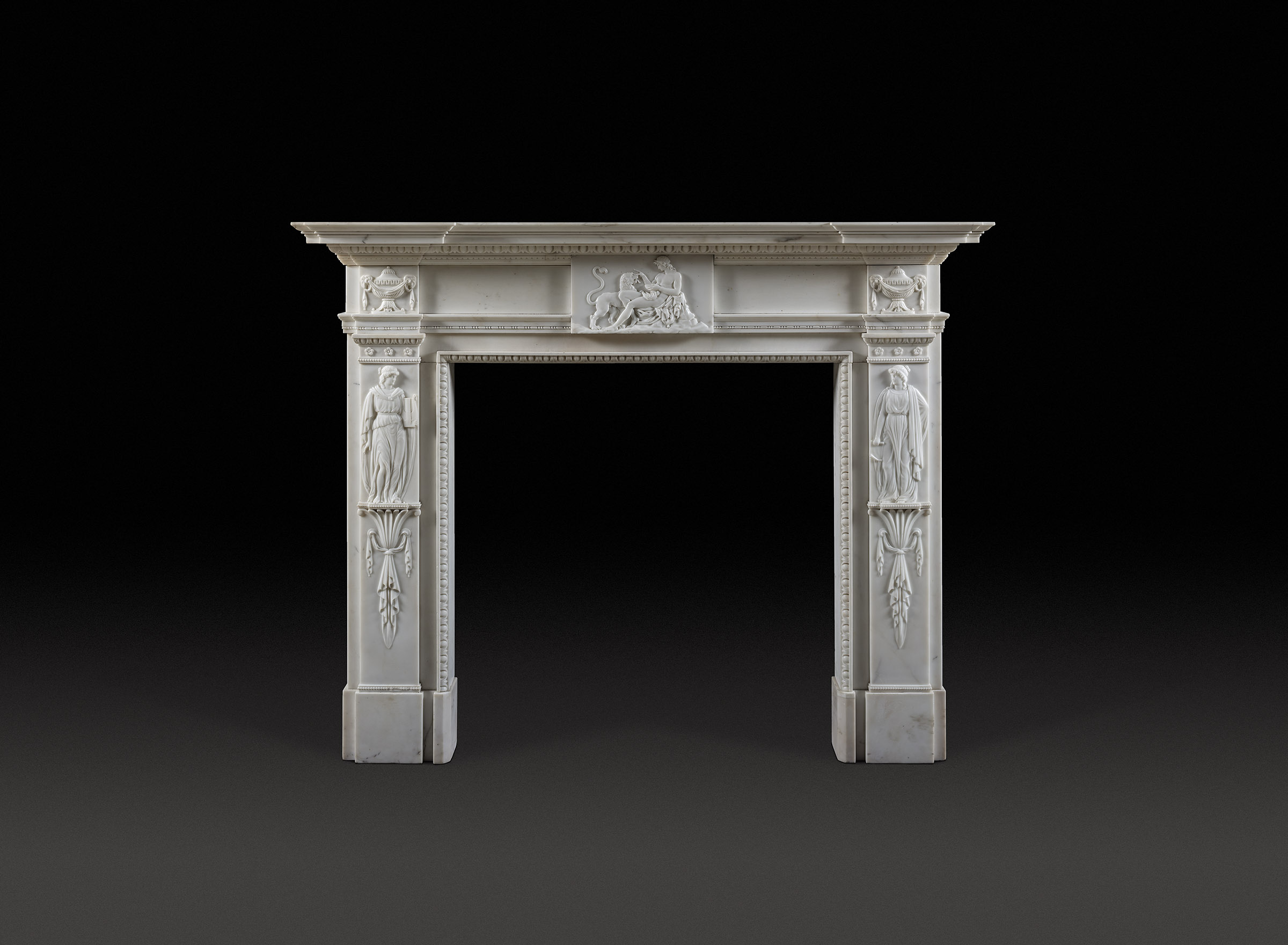
G419
A George III Greek Revival Chimneypiece, Circa 1805, in the Manner of the Architect James Stuart
The elegant moulded breakfront shelf with an egg and dart and a beaded motifs, supported by a frieze ending with cornernblock, carved in high relief with classical urns with rams heads. A tablet at centre depicts the ancient Greek fable of Androcles and the lion from Aesop. The jambs are carved in relief with two full length female figures representing Music and Poetry and standing on beaded cornices. The repeated finely carved egg and dart and beaded details render this composition highly decorative.
Provenance: Stair & Company, Inc. New York, NY, private collection, gifted to Telfair Museums, c. 1977.
The folk tale depicted on the central tablet illustrates the power of compassion and the enduring nature of friendship. Androcles, a fugitive slave unknowingly took shelter in the cave of a ferocious Lion. Androcles sees only the Lion's pain and removes a thorn embedded in his paw. Years pass and fate draws them together again when Androcles is recaptured and thrown to the lions in the Circus Maximum in Rome. The Emperor and the arena are amazed when the lion only shows affection to this man gaining both the man and the lion their freedom.
The use of Aesop fables on English fireplaces became a very popular use from the mid 18th century, starting with the sculptor Thomas Carter and later Henry Cheere. This ancient imagery was largely diffused amongst architects and designers through the circulation of printed publications such as Francis Barlow's wonderfully illustrated volumes of Aesop's fables, published in 1666 and 1687.
The chimneypiece in the Board Room of Lichfield House shows strong resemblance with the present fireplace. The central figure of the frieze depicts Androcles and the lion, and the two figures are identical to those on the central tablet here in question. The fireplace was designed by Stuart, and the sculptor was most probably Peter Scheemakers, whom Stuart worked closely during his career. Another theory points towards Flaxman as the sculptor instead. A second fireplace with a very similar tablet, also designed by Stuart and carved by the same hand can be found in the Cabinet Room of Althorp House, once called Spencer House.
James Stuart, also called ‘Athenian’ Stuart and member of the Society of the Dilettante was considered together with Nicholas Revett the creator of the Greek revival movement. Stuart introduced the Greek style thanks to his printed publication ‘Antiquities of Athens’ (1762). This influential book was the first accurate record of Classical Greek architecture and served as a principal source book for architects and designers well into the 19th century.
One of Stuart’s most important London projects was Lichfield House, at n.15 St James’s square which during the 18th century was the most fashionable square in London. The architect was employed to build a new house at this address in 1763 by a fellow member of the Society of the Dilettante, Thomas Anson, member of parliament for Lichfield. The house was one of the earliest examples of the Greek Revival period in architecture.
With later restoration to the cornerblocks.
Height 55⅛in (140cm) width 70in (177.5cm)
Internal height 40½in (103cm) width 39¾in (101cm)
Footblock to footblock 62in (157.5cm)
Shelf depth 12⅜in (31.5cm)






